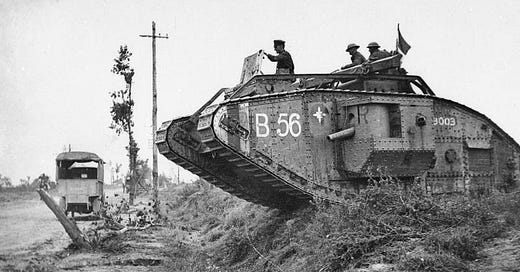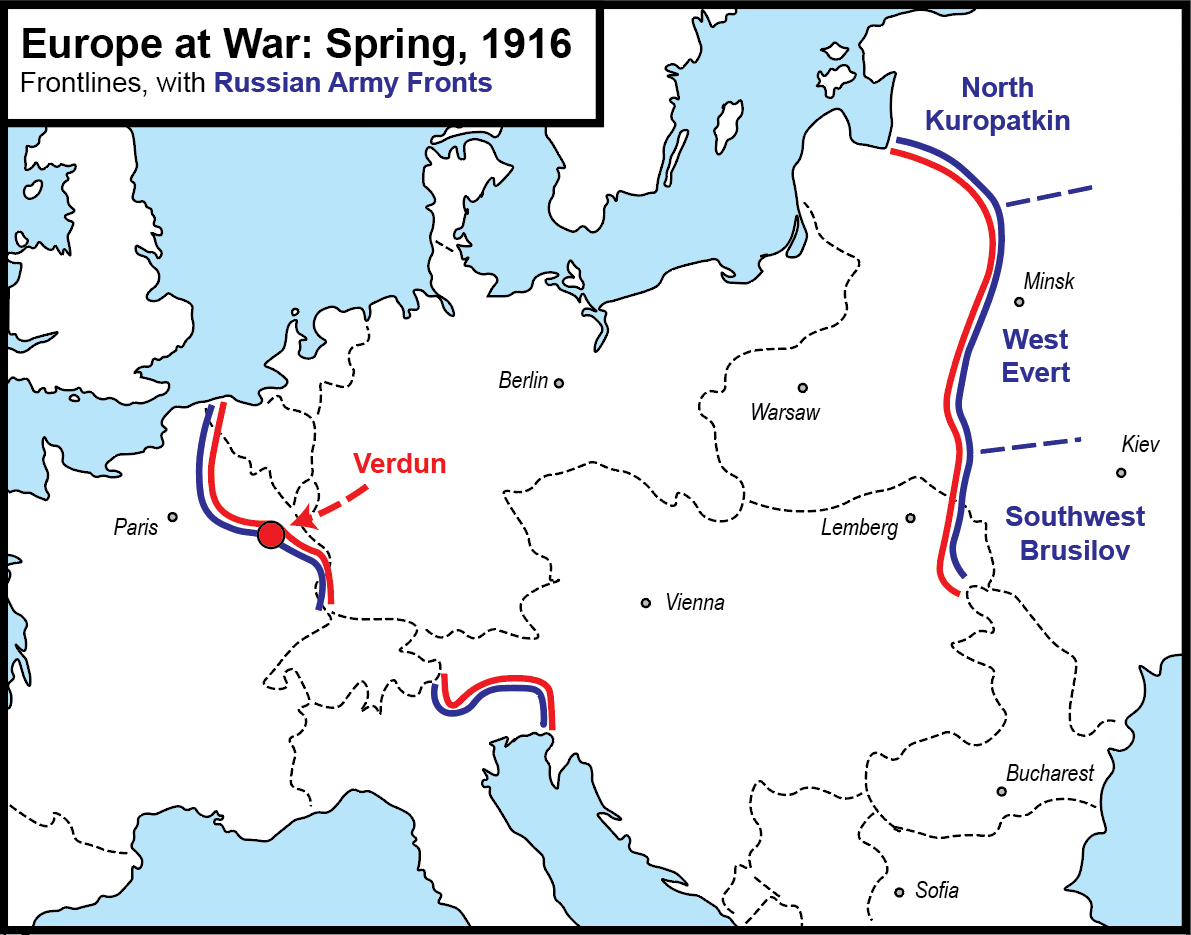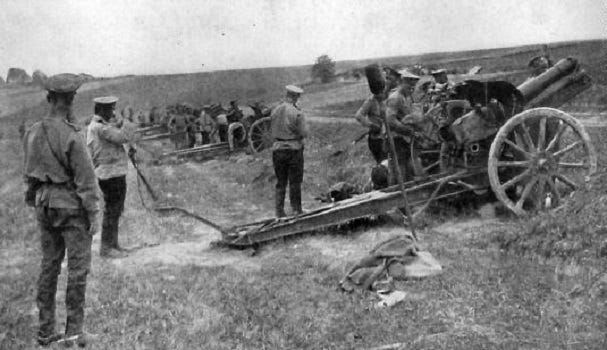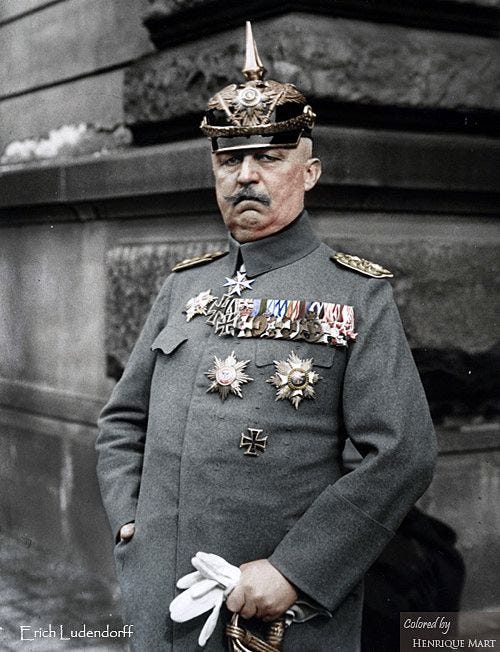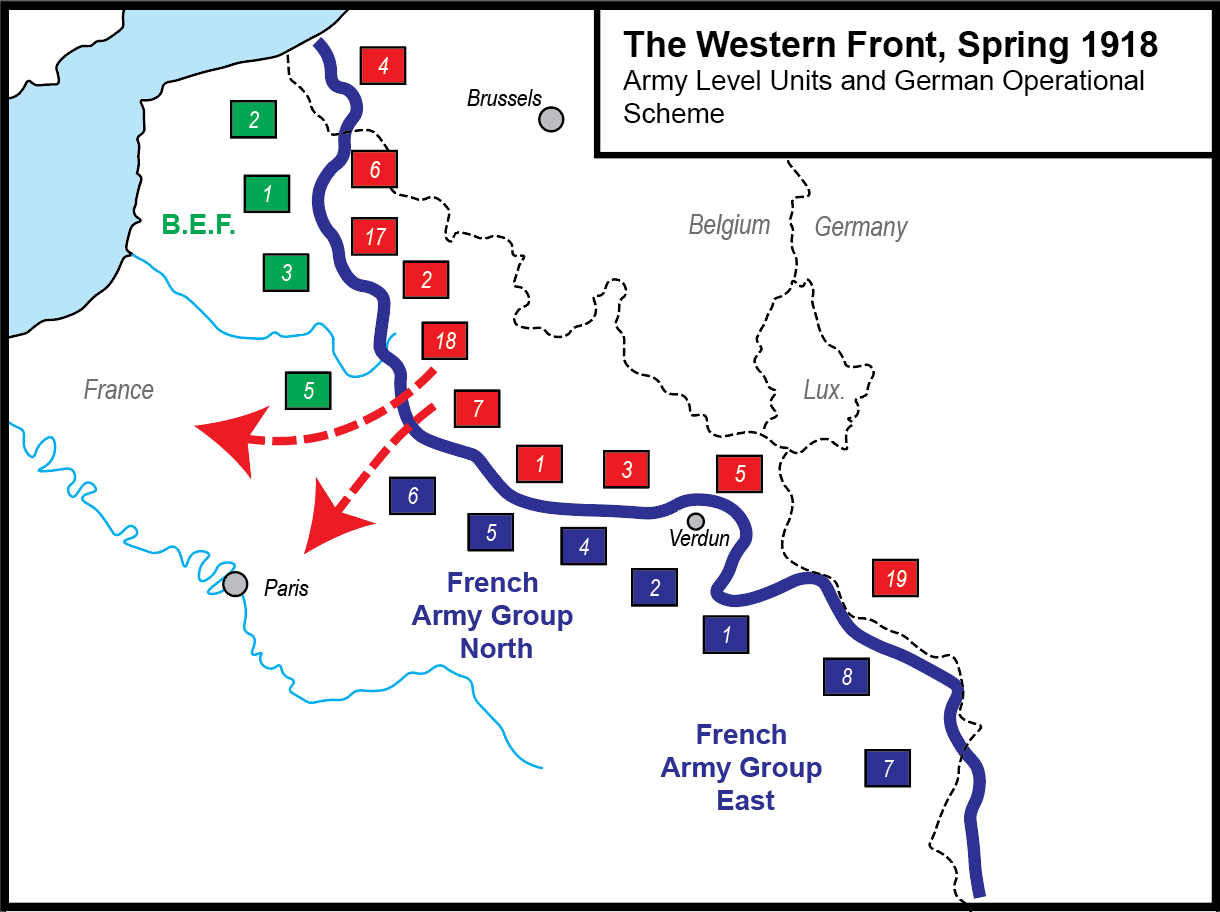This is Part 9 of our series on maneuver in warfare, which will itself be just one of multiple series on various aspects of military history. Simply as a refresher, here are the preceding entries in this series:
Part 1 examined the basic notion of maneuver as a means to create battlefield asymmetry, using the battles of Leuctra, Gazala, and Crimea as examples.
Part 2 discussed the use of dispersion to create ambiguity and paralyze the enemy, using campaigns by Genghis Khan, Napoleon, and Helmuth von Moltke as examples.
Part 3 covered the archetype of the annihilation battle, using ancient examples like Lake Trasimene, Cannae, and Walaja.
Part 4 introduced the peculiar geometry of musket armies, drawing lessons from the battles of Breitenfeld, Leuthen, and Zondorf.
Part 5 was a comprehensive look at Napoleon’s art of war, including his victories at Austerlitz and Jena.
Part 6 examined the first signs that conventional offensive action was beginning to falter in the American Civil War.
Part 7 studied the prosecution of the Franco-Prussian War by Helmuth von Moltke, and how his campaigns set a template for the German approach to war.
Part 8 discussed the famous breakdown and failure of maneuver warfare at the onset of World War One, and contemplated the causes of this failure.
As the astute reader will no doubt have noticed, there is an element of chronological progression here, and we are rapidly approaching the Second World War. Before we get there, however, we must look at the ways that armies of the Great War attempted to revive viable offensive operations in the final years of the conflict. In particular, we will take up, in turn, notable solutions (and attempted solutions) by the Russian, German, and Anglo-French armies.
This is of the utmost importance before advancing to the great mobile campaigns of the Second World War, because the new technologies, tactics, and concepts of that war did not arise entirely sui generis in the interwar period. They were, rather, an extension of innovations that were already clearly present by the end of 1918. Thus, we can say that just as the causes of the Second World War were seeded in the First, the methods were as well.
Brusilov: Dispersal and Suppression
One of the chief ironies of the First World War was the tragic arc of Russia’s participation. From a military-technical perspective, no great power disappointed as badly as Russia in the first years of the war. Russia’s enormous population and strategic depth was greatly feared by Germany - at one point in the prewar period, the German Chancellor Bethmann-Hollweg bemoaned that “Russia grows and grows. She lies on us like a nightmare.” German (and Russian) planners presumed that the sheer mass of Russia’s armies would be a strategic nightmare that would make a two-front war virtually unwinnable for the Central Powers.
Instead, Russia’s armies in 1914 proved to be woefully incompetent to an extent that completely nullified their numerical advantages. 85 percent of Russia’s soldiers were peasants, and the vast majority of these were illiterate - even those serving in technical capacities. Even in the railway battalions, where duties were logistical and technical in nature, over a third of the men were unable to read. By one assessment, three quarters of Russia’s officer corps lacked technical training directly relevant to their duties. This lack of training, combined with technical deficiencies in the artillery arm and problems with shell production, left the Russian army greatly overmatched against the Germans.
The result was two years of defeats and high casualties. Russia’s opening invasion of Germany met disaster at Tannenberg, and by the end of 1915 Russia had been forced to withdraw from Poland, Galicia, and the Baltic coast - abandoning a huge swathe of prewar Russian territory and pulling the frontline nearly all the way back to Minsk. So while prewar German planners were terrified of being crushed by Russia before they could defeat France, after the first 18 months of the war the Russian front was the one place where Germany was unequivocally winning.
From this nadir, the Russian Army actually began a course of marked improvement in 1916 and 1917. A reinvigorated industrial policy began to rectify the shell shortage, while the army at the front showed greatly improved combat effectiveness. In fact, in 1916 Russia launched what would be by far its most successful offensive of the war - arguably one of the most successful operations by any army. While the Germans retained an advantage in combat effectiveness, Russia did manage to essentially crush the Austro-Hungarian Army in 1916 and bring it to the verge of collapse. In the end, Russian defeat was brought about by the rot and collapse of the political system, not by battlefield defeat - for at the time the Tsarist regime fell in 1917, the Russian army was fighting better than it had in 1914.
This temporary Russian comeback was owed largely to one specific officer - General Alexei Brusilov. As a result of churn in the Russian command hierarchy (with a series of indecisive or incompetent generals being dismissed), Brusilov was finally put in command of Russia’s Southwestern Front (a front being the Russian/Soviet equivalent of an Army Group). In this position, he would prove to be by far Russia’s most competent and innovative commander of the war.
In 1916, the Russian Stavka (high command) began to conceive of a broad offensive aimed at achieving two goals. The first was to relieve the pressure on France (which was engaged in a horrific battle at Verdun) by forcing the Germans to redeploy forces to the east, and the second was to achieve a breakthrough which would allow Russia to recapture the Baltic coastline. Accordingly, Russia’s northern and western fronts were to be the main striking forces. Brusilov, in command of the Southwestern front, was to launch a diversionary offensive simply to ease the pressure on the other two fronts.
Brusilov could have simply thrown forces into a massed frontal attack, achieving his diversionary task with minimal creativity and high loss of life. Instead he pursued an innovative approach which turned his “diversionary” attack into the most successful Russian offensive of the war and shattered the Hapsburg Army for good.
Brusilov’s innovations were both operational and tactical, and can be broadly grouped into two categories: force dispersion and the use of artillery in a suppressive, rather than destructive role.
One of the first critical decisions that Brusilov made was that his attack would have no center of gravity or schwerpunkt. Instead, he instructed all five of the field armies in his Southwestern Front (again, the Russian term for an army group) to plan offensives in their own sectors, and furthermore each Corps was ordered to prepare its own attack. Thus, rather than concentrating reserves and firepower to hammer on a single section of the frontline, Brusilov planned to activate virtually his entire front, attacking along a line some 200 miles wide, practically from Pinsk in the north (modern Belarus) all the way to the present day border between Ukraine and Romania.
This dispersal of effort required Brusilov to abandon longstanding notions of generalship - transitioning from what we will call a push to a pull model of the attack, and eschewing conventional wisdom about the necessity of concentrating forces.
An elaboration:
Generalship, as archetypically practiced by Napoleon, conventionally featured the general making operational decisions like a chess player, deciding where to commit his main effort and then feeding reserves and firepower into these key positions. The general impression of such battle consisted of a top-down information flow - the general observing the course of the battle and “pushing” his reserves in at the place of his time and choosing. Brusilov, in contrast, created a broad front with greatly dispersed effort - the commitment of reserves and exploitation would therefore be determined by a bottom-up information flow. Not every attack along the entire 200 miles would succeed, but reserves would be “pulled” into reinforcing successful breaches. Thus, the guiding animus for the continuation of the assault became on the ground feedback in the lower echelons of the command hierarchy, rather than the premeditation of the overall commander.
Brusilov’s decision to attack in a dispersed manner across his entire front ran in direct contravention of the conventional wisdom of the day. Virtually all armies in this period aimed to accumulate massive reserves (of men, guns, and ammunition) in relatively narrow sectors. Both the allied offensive at the Somme and the German operation at Verdun targeted sections of front less than 30 miles wide.
It had furthermore become customary for generals to pout, threaten, complain, and otherwise do everything possible to cajole high command to assign them every single man, gun, and shell possible before actually attem.pting an offensive. Brusilov’s counterpart, General Alexei Evert, was in command of the Russian Western Front and was tasked with the primary thrust of Russia’s offensive. As the focal point of the operation, Evert endlessly demanded more men, more munitions, more guns, and more time - delaying the attack by weeks in the process. Brusilov, however, being tasked with a mere diversion, had to make do with what he had.
Therefore, at a time where standard operating procedure was to amass the absolute maximum possible combat power on a small and targeted section of front, Brusilov - despite being a low priority for reinforcements and material - planned to attack everywhere in his sector, with every corps in his command planning its own attempted breach of the Austrian lines.
The operational choice to favor dispersion over concentration had a brilliant synthesis with Brusilov’s other innovation, which occurred on the tactical level. Given that his task was diversionary in nature, his southwestern front was a low priority for shell deliveries relative to Evert’s forces. Brusilov therefore had to think carefully about how to conduct the attack with limited resources. On the whole, Brusilov enjoyed a narrow advantage in manpower over the Austrians in his section of front (perhaps 500,000 Russians against 440,000 Austrian troops) and a similar number of artillery pieces, though Brusilov was working on a shoestring budget of heavy artillery shells.
Brusilov’s solution was to conduct extensive reconnaissance and use his artillery in a suppressive, rather than overtly destructive role. He assigned his air forces (perhaps 100 planes) exclusively to reconnaissance duty, making extensive flyovers of the Austrian lines and creating thorough sketches of the enemy defenses.
Brusilov’s attack finally began on June 4. Troops on all fronts of the war were by this time accustomed to agonizingly lengthy artillery bombardments precipitating attacks. It was not uncommon for defenses to be barraged for a week or more before infantry attacks began, with the intention of simply smashing the frontline of the defense to bits with thousands upon thousands of indiscriminate shells. Brusilov, working on a tight ration of shells, instead targeted specific hardpoints, with careful coordination to end the barrage just as his infantry arrived at the enemy trenches - a span of time which was itself shortened by his ambitious program of digging trenches and tunnels into no-man’s land, so that in many cases Russian troops only had to cover 40 yards or so to reach the Hapsburg defenses.
The synthesis of all this was complete confusion and panic on the Austrian side. The Russian bombardment was focused and short lived, and the defining experience of the Hapsburg troops was bewilderment when the shelling abruptly stopped and Russian troops began to spill into their trenches. Many frontline Austrian troops were captured still huddling in their shelters - they did not even have time to come out and re-man the lines after the end of the artillery preparation.
The decision to attack across a widely dispersed front had the further effect of paralyzing Austrian command, as it was not immediately clear where the main point of Russian effort was directed - and by extension, where they should send reserves.
The results seemed to portend a decisive Russian victory. This was a war where offensive attempts generally defined success as a matter of only a few kilometers. At the Somme, for example, 141 days of combat and some 600,000 casualties managed to gain the allies a salient in German lines that was only 10 kilometers deep. In contrast, Brusilov’s offensive managed to bash huge breaches in the Austrian line (in some sectors, the entire first belt of defenses was captured on the first day) so that by the middle of June the Russians had already pushed 60 kilometers into Austrian lines in some places.
The rapidity and the breadth of the Russian advance left Austrian units overwhelmed, disoriented, and frequently cut off from both neighboring units and command. Thus, Russian success in taking territory quickly spiraled into outright collapse among many Austrian units, and the Russians began to take a huge number of prisoners. The Austrian 7th Army, for example, lost 100,000 men in just two weeks, many of them captured. It looked as if the Hapsburg force was on the verge of total failure.
Unfortunately, several factors conspired to prevent Brusilov from leveraging his tremendous tactical success into a true strategic victory.
The first such factor was the utter uselessness of Brusilov’s counterpart to the north - General Evert, commander of the Russian Western Front. Evert repeatedly postponed and delayed his own offensive (frequently to demand more men and more shells from Stavka), to the effect that there was absolutely no pressure elsewhere on the eastern front. This allowed the Germans to allocate some of their own reserves to backstop the Austrians and help them stabilize the front. Had Evert’s offensive been launched roughly concurrent with Brusilov’s attack, the Germans may have been unable to assist and Brusilov could possibly have cracked the entire Austrian front beyond repair.
The other problem, broadly speaking, was that Brusilov simply did not have a clear vision for how to exploit his success. The ideal operational target would have been Kovel - a major railroad intersection which would slice the Central Powers’ transit in the theater in two if it were captured. Unfortunately Brusilov did not receive clear direction from Stavka, and he opted to spend the crucial days of mid-June consolidating his gains rather than exploiting the hole that he had created.
As a result of Evert’s inactivity and a lack of exploitation, the Central Powers were able to restore the integrity of their front and launch a counterattack (with the Germans doing all the heavy lifting) which stopped Brusilov’s advance towards Kovel. Further attempts to keep the advance going failed - by this time, Brusilov’s army group was simply at its limits, owing to mounting losses, exhaustion of munitions stocks, and the strains from fighting so far from Russian railheads.
So, what to make of all this? Brusilov’s offensive was by far Russia’s most successful operation of the war. It pushed the entire front with Austria some 50 to 60 kilometers to the west, and inflicted huge casualties on the Central Powers. The Austrians alone lost some 600,000 men, the majority of whom were captured. When German losses are taken into account, Central Powers casualties were well over 850,000. Unfortunately, Brusilov’s failed efforts to continue the offensive through the late summer months caused his own losses to balloon as well, and the entire operation became essentially a manpower wash, with both sides taking similar total losses.
In the end, Brusilov definitively succeeded in two major achievements. The entire point of his attack had, in the first place, been diversionary - and what a spectacular diversion it became. Brusilov’s front ended up sucking in 30 extra divisions in German and Austrian reinforcements, denuding the Central Powers on other fronts and finally taking the pressure of the French at Verdun. Secondly, the huge losses taken by the Austrians essentially broke their ability to function independently - they were forced to enter into joint command with the Germans, and for the rest of the war they were unable to conduct operations independent of German oversight and assistance.
For us, Brusilov offered early hints that there was, indeed, a tactical solution to the trenches. While he was unable to convert his tactical success into a true strategic breakthrough, Brusilov demonstrated that careful tactical preparation could indeed break through fortified defenses, and in particular that artillery could have better success being used in a precision role, rather than as a brute instrument for mindlessly clubbing enemy lines. Furthermore, his broad dispersion and operational ambiguity prevented the Austrians from rushing reserves to the front. In contrast, the other two Russian front commanders, Evert and Kuropatkin, would concentrate their offensives on narrow sectors (8 to 10 km wide) and both attacks collapsed with heavy loss of Russian life.
Ultimately, the fairest assessment of Brusilov is that he was a competent officer who successfully solved the tactical problem of breaching prepared defensive belts, but was neglectful and indecisive on the operational level - that is to say, leveraging a tactical success into meaningful objectives. Or, as a contemporary Russian general put it:
The command of the Southwestern Front gave its particular attention to the irresistible completion of the first part of its task - completing a breakthrough - but did not sufficiently value the second part -the best use of that breakthrough to put our army in a better strategic position… when we got out in the open, when we broke out from the trenches of the enemy’s fortified belt, when we needed to maneuver… our strategy suffered from its neglect and led us to a dead end at Kovel.
Brusilov had done better than anyone before him, but even so, three years into the war maneuver and decisive operations seemed as elusive as ever. Soon, however, it would be Germany’s turn to shake things up.
The Kaiserschlacht
For Germany, 1917 was an agonizing year of missed opportunities at the highest levels. This was, at the same time, the year that Germany gained the best opportunity to win the war while also making egregious decisions that guaranteed her defeat. In 1917, Germany was victorious in the east - pursuing a sort of hybrid warfare against Russia by mixing battlefield action with destabilizing political intrigue - arranging for the transportation and financing of an anti-war Russian pamphleteer named Vladimir Lenin. This mixed strategy worked. The Russian home front (in particular the political sphere in Petersburg) collapsed before the Russian army did, and by early 1918 Russia had completely dropped out of the war.
The collapse of Russia afforded Germany a real opportunity to win the war. They were now mercifully freed from the burden of the two front war, freeing up troops which gave the German Army a substantial numerical advantage in the west for the first time in the war. Unfortunately for Berlin, this advantage was squandered by one of the all-time great strategic misfires. Also in 1917, the Germans made the unwise decision to begin unrestricted submarine warfare against allied shipping, which necessarily entailed sinking American vessels and trigging American entry into the war.
Thus, the Germans found themselves at the end of 1917 in the peculiar position of enjoying a powerful but temporary military advantage in the west. The defeat of Russia gave them an edge in both manpower and firepower, but this advantage would last only until American units began to arrive in Europe. The order of the day for Hindenburg and Ludendorff, therefore, was to contrive a way to win the war during this narrow window of opportunity.
The ensuing German offensive is known by many names. Formally designated Operation Michael, it is also variably called the German Spring Offensive, the Ludendorff Offensive, or - most cinematically, the Kaiserschlacht: the Kaiser’s Battle.
This final roll of the dice by Germany was characterized by two notable deviations from prior offensives.
The first was the return to classically Prussian plans for operational level maneuver. After the failure of the Moltke Plan in 1914, German operations in the west had become very limited in scope and were largely limited to contrived attempts to attrit allied forces. With Operation Michael, however, Ludendorff aimed to return to mobile operations targeted at army level allied targets. More specifically, the German plan was to attack the “hinge” in the allied line between the British and French sectors. The German offensive would target the connective front between the British 5th Army and the French 6th; having breached this gap, they would attempt to swing northward, cutting the French and British off from each other and hopefully pinning the British against the Channel. An added benefit of this plan was that the sector slated for attack was also directly on the path to Paris. Paris was not the operational target - the British Expeditionary Force was. But the attack, simply by virtue of creating a threat in the direction of the French Capital, contained within it the prospect of misdirecting the French.
The second great deviation in the spring offensive was on the tactical level. Germany, like all combatants, had come to understand that massed attacks with stereotyped formations were simply too costly to be a viable way to breach fortified defensive belts. Cognizance of this fact led the Germans to steadily develop their infamous Stormtroopers, or Shock Troops.
Stormtroopers were trained in methods which were colloquially called Infiltration Tactics, but the reality was less sinister than it sounded. We can enumerate the changes of these new infantry tactics as follows:
Devolution of tactical tasks to smaller units
Irregular pace of advance
Heavy use of fire and movement tactical maneuver
This is much less complicated than it sounds. First, the base tactical unit shifted from the company (several hundred men) to smaller units like the platoon (perhaps 50 men). These smaller groups would then conduct their advance irregularly, that is to say, more spread out and making proper use of cover. This was the end of the “charge”, as such. Rather than units of many hundreds attempting to rush across open ground to assault the enemy position, smaller units would work their way forward at a judicious and measured pace.
The final point in particular - the use of fire and movement - is where the German infiltration tactics clearly showed themselves to be the precursor of modern infantry combat. Fire and movement is, to this day, an absolutely essential and basic infantry tactic. It involves the cooperative action of the unit (be it a squad or a platoon) split into two elements. A “firing element” suppresses the enemy position by firing upon it, covering the approach of the “maneuvering element.” In Operation Michael, the first echelon of assault troops were liberally equipped with light machine guns, mortars, flamethrowers, and grenades, enabling them to effectively suppress and destroy enemy positions.
Possibly, this seems very rudimentary and obvious to the modern reader. At the time, however, this was a rather significant shift in thinking, because it required surrendering the centralized control that had long characterized armies. By their very nature, infiltration tactics gave unprecedented importance and initiative to junior officers by turning small units, like platoons and squads, into maneuvering and dynamic forces. In the armies of Napoleon’s day, lieutenants simply did not make decisions. They existed to keep discipline in the lines and call out repetitious and formulaic orders to march, reload, and fire. For a stormtrooper unit in 1918, however, a lieutenant would be expected to make vital and creative decisions about an assault on the spot. In other words, we might say that the tactical changes which occurred during the war led to an expansion and a deepening of the thinking, decision making officer corps.
The German storm or shock troopers clearly foreshadowed the future of infantry tactics, with their ability to function in small units, their cooperative use of arms like machine guns and mortars, and their professional, task oriented conduct led by officers like lieutenants. Crucially for the Germans, however, in 1918 only a small portion of the infantry had been trained and equipped according to these new standards and tactics. Therefore, the Germans adopted a mixed solution - each standard infantry regiment (still fighting in a more traditional, stereotyped way) was paired with a single storm platoon, which would lead the charge. This made the German army something of a diamond tipped spear. The point was very deadly indeed, but the strength of the shaft was questionable.
Keep reading with a 7-day free trial
Subscribe to Big Serge Thought to keep reading this post and get 7 days of free access to the full post archives.
